How Elon Musk Set Tesla on a New Course for Self-Driving
Elon Musk took Tesla on a new path for self-driving by implementing strategic changes. Elon Musk, the visionary behind Tesla, has ushered in an era of self-driving cars with his groundbreaking initiatives.
Through relentless innovation and strategic decision-making, Musk has set Tesla on a completely new course. By integrating advanced artificial intelligence technology, over-the-air software updates, and an ambitious vision for the future, Tesla has become a pioneer in the realm of autonomous driving.
With a relentless focus on safety, efficiency, and sustainability, Musk has positioned Tesla as a global leader in the race towards self-driving vehicles. We will delve into the key factors that have shaped Tesla’s transformative journey towards self-driving and explore the implications of this paradigm shift for the automotive industry.
The Visionary Mind Of Elon Musk
Elon Musk’s visionary mind took Tesla on a new course, paving the way for self-driving cars. His innovative ideas transformed the automotive industry and shaped the future of transportation.
Elon Musk, the enigmatic entrepreneur and founder of Tesla, has always been fascinated by the potential of self-driving technology. His visionary mind and relentless pursuit of innovation have set Tesla on a new course in the world of autonomous vehicles.
Let’s take a closer look at Elon Musk’s early fascination with self-driving technology:
Elon Musk’S Early Fascination With Self-Driving Technology
- In his early days, Elon Musk was captivated by the concept of self-driving cars and the possibilities they held for revolutionizing transportation.
- Musk recognized the potential for self-driving technology to enhance road safety, reduce traffic congestion, and minimize the environmental impact of vehicles.
- He became determined to make fully autonomous vehicles a reality, pushing the boundaries of technology and challenging the status quo in the automotive industry.
Musk’S Relentless Pursuit Of Innovation
- Elon Musk’s relentless pursuit of innovation has been integral to Tesla’s success in the self-driving arena.
- He has assembled a team of world-class engineers and scientists to develop cutting-edge autonomous driving systems.
- Musk’s hands-on approach has seen him actively involve himself in the development and testing of Tesla’s self-driving technology, driving progress forward.
- He has been unafraid to take risks and make bold moves to propel Tesla to the forefront of the self-driving revolution.
Setting Tesla On A New Course
- Musk’s visionary mindset and unwavering commitment to self-driving technology have set Tesla on an exciting new course.
- With features like Autopilot and Full Self-Driving (FSD), Tesla is pushing the boundaries of what is possible in autonomous driving.
- Tesla’s fleet of vehicles, equipped with advanced sensors and AI technology, are continuously learning and improving their self-driving capabilities.
- Musk’s vision for a future where self-driving cars are the norm has garnered immense interest and excitement worldwide.
Elon Musk’s relentless pursuit of innovation and belief in the potential of self-driving technology have set Tesla on an exciting and groundbreaking path. Through his visionary mindset and hands-on approach, Musk has positioned Tesla at the forefront of the self-driving revolution, paving the way for a future where autonomous vehicles are commonplace.
Tesla’S Journey Towards Self-Driving
Elon Musk’s vision inspired Tesla on a new path towards self-driving vehicles. With groundbreaking advancements, the company is revolutionizing the future of transportation.
Incorporating self-driving features into Tesla vehicles:
- Tesla’s mission to develop self-driving technology has been a continuous endeavor, aiming to revolutionize the automotive industry. Their journey towards self-driving started with introducing Autopilot, a driver assistance system, in 2014.
- Autopilot was initially designed to offer features such as adaptive cruise control and lane-keeping assist. It allowed Tesla vehicles to automatically maintain a set speed, change lanes, and stay within their designated lane.
- Over time, Tesla has expanded upon these features, incorporating more advanced capabilities into their vehicles to enhance the self-driving experience. The company has released several versions of Autopilot, each bringing additional functionalities and safety improvements.
Challenges faced by Tesla in developing self-driving technology:
- Developing self-driving capabilities comes with numerous challenges that Tesla had to overcome. Some of these challenges include:
- Gathering and analyzing vast amounts of real-time data to train the self-driving algorithms effectively.
- Ensuring the reliability and accuracy of the sensors and cameras used in the vehicle’s self-driving system.
- Adapting to different road conditions, environments, and traffic scenarios to ensure the system operates seamlessly.
- Meeting rigorous safety standards and regulations to ensure the self-driving system is safe for public use.
The evolution of Tesla’s Autopilot system:
- Tesla’s Autopilot system has evolved significantly since its inception, showcasing the company’s commitment to advancing self-driving technology:
- Autopilot 1.0: This version introduced Tesla’s first set of self-driving features, including Autosteer and Traffic-Aware Cruise Control. These capabilities marked the initial step towards achieving full self-driving capabilities.
- Autopilot 2.0: Tesla upgraded the hardware suite in their vehicles to support more advanced self-driving capabilities. This version introduced Enhanced Autopilot, enabling features like Autosteer on highways, automatic lane changing, and summoning the vehicle remotely.
- Autopilot 3.0: Tesla introduced the Full Self-Driving (FSD) Computer, a custom-designed chip capable of processing large amounts of data for real-time self-driving tasks. This hardware upgrade paved the way for future advancements in autonomous driving.
- Autopilot 4.0 (anticipated): Tesla is continually working on improving their self-driving technology. With each iteration, the company aims to enhance safety, efficiency, and user experience, bringing them closer to achieving the goal of fully autonomous driving.
Tesla’s journey towards self-driving has been marked by continuous innovation and a relentless pursuit of revolutionizing the automotive industry. By incorporating self-driving features into their vehicles, overcoming challenges, and evolving their Autopilot system, Tesla has set a new course for the future of autonomous driving.
Tesla’S Self-Driving Breakthroughs
Elon Musk’s groundbreaking advancements in self-driving technology have propelled Tesla onto a new trajectory. The company’s innovative approach is revolutionizing the automotive industry, creating a bold future for autonomous vehicles.
Tesla’S Advancements In Artificial Intelligence And Machine Learning
Tesla’s commitment to pushing the boundaries of self-driving technology has led to significant advancements in artificial intelligence (AI) and machine learning. These breakthroughs have propelled Tesla to the forefront of the autonomous driving revolution. Here are some key points to understand about Tesla’s innovations in this field:
- Vast Data Collection and Processing: Tesla has amassed a massive amount of driving data from its fleet of vehicles, which helps in training their self-driving algorithms. By continuously collecting and processing this data, Tesla can refine its algorithms and improve the accuracy and reliability of its self-driving technology.
- Deep Neural Networks: Tesla utilizes deep neural networks, a type of AI algorithm inspired by the human brain, to drive its self-driving technology. Neural networks excel at pattern recognition and can analyze vast amounts of data to make informed decisions on the road. Tesla leverages these networks to navigate complex driving situations and make accurate predictions in real-time.
- End-to-End Learning: Tesla’s self-driving technology is built on an end-to-end learning approach, which means the system learns directly from raw sensor input without relying on handcrafted rules or pre-defined behaviors. This approach allows the system to adapt and improve based on real-world driving experiences, making it more robust and capable of handling diverse driving scenarios.
- Frequent Software Updates: One of the key strengths of Tesla’s self-driving technology is its ability to receive over-the-air software updates. These updates introduce new features, improve existing functionality, and enhance the self-driving capabilities of Tesla vehicles. This continuous improvement process ensures that Tesla’s self-driving technology remains at the cutting edge of AI and machine learning.
- Active Learning from Tesla Owners: Tesla owners actively contribute to the improvement of self-driving technology through the company’s data collection program. By opting into this program, Tesla owners allow their vehicles to record valuable driving data, enabling Tesla to learn from real-world scenarios and iteratively enhance its algorithms. This collaborative approach fosters a sense of community and collective progress towards full autonomy.
The Role Of Neural Networks In Tesla’S Self-Driving Technology
Neural networks play a crucial role in Tesla’s self-driving technology, enabling the vehicles to perceive and interact with their environment. Here are some key aspects to understand about the role of neural networks in Tesla’s self-driving technology:
- Perception and Sensor Fusion: Neural networks process inputs from various sensors, including cameras, radar, and ultrasonic sensors, to perceive the surrounding environment. By fusing data from these different sources, the neural networks can generate a detailed understanding of the road, objects, and potential obstacles.
- Object Recognition and Tracking: Through neural networks, Tesla’s self-driving technology can accurately detect and identify objects on the road, such as other vehicles, pedestrians, and cyclists. These networks excel at recognizing patterns and categorizing objects, which enables Tesla vehicles to make informed decisions and take appropriate actions.
- Path Planning and Decision-Making: Neural networks analyze the perceived environment and generate plans and predictions for safe and efficient navigation. They consider factors such as traffic rules, road conditions, and the behavior of other road users to determine the best course of action. This real-time decision-making process is crucial for ensuring smooth and reliable autonomous driving.
- Continuous Learning and Improvement: Neural networks are designed to continuously learn and improve by leveraging Tesla’s vast driving data. The more data they process, the better they become at recognizing patterns, making accurate predictions, and handling complex driving scenarios. This iterative learning process allows Tesla’s self-driving technology to constantly evolve and become more capable over time.
Elon Musk’S Vision For A Fully Autonomous Fleet Of Tesla Vehicles
At the core of Tesla’s self-driving technology is Elon Musk’s vision for a fully autonomous fleet of Tesla vehicles. Musk envisions a future where Tesla owners can summon their vehicles remotely, and the vehicles can navigate on their own, seamlessly and safely.
Here are the key points reflecting Musk’s vision:
- Level 5 Autonomy: Musk aims to achieve Level 5 autonomy, which means that Tesla vehicles will not require any driver intervention under any circumstances. This level of autonomy represents the pinnacle of self-driving technology, where vehicles can operate independently in any driving scenario, including complex urban environments and highways.
- Shared Autonomous Network: In line with Musk’s vision, Tesla plans to create a shared autonomous network where Tesla owners can add their vehicles to a ride-hailing platform when they are not using them. This vision effectively transforms Tesla vehicles into a fleet of autonomous taxis, offering convenient transportation services to users and contributing to a more sustainable future.
- Safety and Regulation: While striving for full autonomy, Musk prioritizes safety and acknowledges the need for regulatory approval. Tesla places a strong emphasis on rigorous testing, continuous improvement, and collaboration with regulatory bodies to ensure the safe deployment of self-driving technology.
- Enhanced User Experience: With fully autonomous capabilities, Tesla vehicles will provide an enhanced user experience, allowing occupants to utilize travel time more efficiently. Whether it’s working, relaxing, or enjoying entertainment, the occupants can focus on activities other than driving, which enhances productivity and comfort.
- Disrupting the Automotive Industry: Musk’s vision for a fully autonomous fleet of Tesla vehicles has the potential to revolutionize transportation and disrupt the automotive industry. By combining cutting-edge technology, sustainable practices, and a user-centric approach, Tesla aims to redefine the way we travel, making transportation safer, more efficient, and more accessible for everyone.
With Tesla’s advancements in artificial intelligence and machine learning, the crucial role of neural networks in self-driving technology, and Elon Musk’s ambitious vision, the future of autonomous driving looks promising. Tesla continues to innovate and push the boundaries, inching closer to a fully autonomous fleet that could reshape the way we perceive transportation.
The Impact Of Tesla’S Self-Driving Technology
Elon Musk’s groundbreaking self-driving technology has revolutionized Tesla, setting the company on an entirely new trajectory. Tesla’s autonomous driving capabilities have had a significant impact on the automotive industry, paving the way for a future where cars can navigate themselves with remarkable precision and safety.
Elon Musk’s visionary approach to self-driving technology has had profound effects on the future of transportation. Tesla’s advancements in autonomous driving have revolutionized the automotive industry and paved the way for a new era of mobility. In this section, we will explore the impact of Tesla’s self-driving technology, focusing on the increased safety, the potential for autonomous taxis and ridesharing services, and the implications for the future of transportation and urban planning.
Increased Safety And Reduced Accidents With Self-Driving Features
- Tesla’s self-driving features, such as Autopilot and Full Self-Driving (FSD), have significantly improved safety on the road.
- By utilizing advanced sensors, cameras, and artificial intelligence, Tesla vehicles can detect and respond to potential hazards more effectively than human drivers.
- The self-driving technology enables automated emergency braking, lane keeping, and adaptive cruise control, reducing the risk of accidents caused by human error.
- According to Tesla’s safety reports, vehicles with Autopilot engaged have had a lower accident rate compared to those without it.
- The potential to further refine and enhance self-driving capabilities promises even greater safety benefits in the future.
The Potential For Autonomous Taxis And Ridesharing Services
- Tesla’s self-driving technology opens up exciting possibilities for autonomous taxis and ridesharing services.
- With the ability to navigate and operate without human intervention, Tesla vehicles could function as on-demand taxis, offering convenient and cost-effective transportation solutions.
- By leveraging self-driving technology, Tesla aims to maximize vehicle utilization, reducing the need for private car ownership.
- Autonomous taxis powered by Tesla’s self-driving software could operate 24/7, providing a round-the-clock transportation option.
- This shift towards autonomous ridesharing services has the potential to transform the way people commute, enhancing mobility and reducing congestion on the roads.
The Implications For The Future Of Transportation And Urban Planning
- Tesla’s self-driving technology has far-reaching implications for the future of transportation and urban planning.
- As autonomous vehicles become more prevalent, cities will need to adapt their infrastructure and regulations to accommodate this paradigm shift.
- Traffic patterns and congestion may change as self-driving cars communicate and coordinate with each other, optimizing routes and minimizing delays.
- With the rise of autonomous ridesharing, the demand for parking spaces could decrease, leading to more space for green areas or recreational facilities in cities.
- Urban planners will need to consider how self-driving technology can shape the design of future cities, prioritizing pedestrian-friendly spaces and reimagining the role of traditional parking structures.
Tesla’s self-driving technology has brought about various positive changes in the realm of transportation. From increased safety and reduced accidents to the potential for autonomous taxis and ridesharing services, these advancements have the power to transform urban landscapes and enhance the way we move within them.
Tesla’S Competitors In The Self-Driving Space
Elon Musk’s strategic moves have put Tesla at the forefront of the self-driving space. Competitors like Waymo and GM’s Cruise Automation are racing to catch up with Tesla’s technology and advancements in autonomous driving. The future of self-driving cars is rapidly evolving, and Tesla seems to have set a new course for the industry.
A Look At Other Automakers’ Efforts In Self-Driving Technology
- Automaker A:
- Automaker A has invested heavily in research and development of self-driving technology.
- Their primary focus is on improving safety features and enhancing the driver’s experience.
- They have successfully achieved Level 3 autonomy in some of their vehicles.
- Automaker B:
- Automaker B is known for its partnership with tech companies to accelerate their self-driving technology.
- Their approach involves integrating artificial intelligence and machine learning algorithms into their vehicles.
- They have made significant progress in achieving Level 4 autonomy in controlled environments.
- Automaker C:
- Automaker C has taken a more conservative approach to self-driving technology.
- They prioritize ensuring regulatory compliance and minimizing risks associated with autonomous driving.
- Their current focus is on developing advanced driver-assistance systems rather than fully autonomous vehicles.
Tesla’S Approach Differs From Its Competitors
- Continuous innovation:
- Tesla has been at the forefront of self-driving technology advancements.
- They constantly push the boundaries by releasing frequent software updates that enhance their autopilot capabilities.
- This approach allows Tesla to iterate quickly and improve its self-driving technology over time.
- Data-driven approach:
- Tesla has an extensive fleet of vehicles on the road, collecting valuable data.
- They use this data to train their neural networks and improve the performance of their self-driving system.
- The continuous feedback loop enables Tesla to refine and optimize their self-driving algorithms.
- Hardware integration:
- Tesla’s vehicles are equipped with advanced hardware, such as cameras, sensors, and powerful onboard computers.
- This integrated hardware allows Tesla to gather real-time data and process it efficiently.
- It gives them a competitive edge in developing robust self-driving capabilities.
The Challenges And Opportunities In The Race For Self-Driving Supremacy
- Regulatory hurdles:
- The self-driving industry faces various regulatory challenges, as policymakers strive to ensure safety.
- Striking the right balance between innovation and regulation remains a key challenge.
- Companies must navigate legal frameworks to bring their self-driving technology to market.
- Safety concerns:
- Ensuring the safety of self-driving vehicles is of utmost importance.
- Companies need to address technical challenges to minimize accidents and improve reliability.
- Safety testing, rigorous validation processes, and continuous improvements are paramount.
- Market competition:
- The race to achieve self-driving supremacy is highly competitive.
- Automakers and tech companies vie for market dominance and strive to be the first to offer fully autonomous vehicles.
- This competition drives innovation, accelerates progress, and expands opportunities for consumers.
- Societal impact:
- Self-driving technology has the potential to revolutionize transportation and mobility.
- It can enhance accessibility, reduce congestion, and improve road safety.
- However, it also raises questions about job displacement in the transportation industry and the ethical implications of decision-making algorithms.
In this ever-evolving landscape, Tesla stands out for its bold approach to self-driving technology. Their continuous innovation, data-driven strategy, and hardware integration set them apart from their competitors. While the race for self-driving supremacy faces challenges in terms of regulation, safety, and competition, it also presents immense opportunities to transform transportation and improve the way we move.
Regulatory Hurdles And Public Perception
Elon Musk’s visionary move to prioritize self-driving technology at Tesla faces challenges from regulatory hurdles and public perception. However, he has set the company on a new course with the potential to revolutionize transportation and shape the future of autonomous vehicles.
Elon Musk’s visionary approach towards self-driving cars has undoubtedly set Tesla on a new course, revolutionizing the automotive industry. However, this journey has not been without its fair share of challenges, particularly in terms of navigating the legal and regulatory landscape, as well as gaining public trust and acceptance.
Let’s delve deeper into these two critical aspects.
The Legal And Regulatory Landscape For Self-Driving Cars:
- Self-driving cars have presented policymakers and regulators with complex challenges, as they strive to strike a delicate balance between promoting innovation and ensuring public safety.
- Historically, regulations were framed around traditional, human-operated vehicles, making it necessary to adapt existing rules to accommodate the unique characteristics and capabilities of autonomous vehicles.
- Key legal considerations include liability issues in the event of accidents or malfunctions, setting uniform standards for self-driving technology, and determining the role of human drivers in autonomous vehicles.
The Challenges In Gaining Public Trust And Acceptance:
- The introduction of self-driving cars has sparked a range of concerns and skepticism among the general public. Safety, privacy, and job security are just some of the apprehensions raised by individuals.
- Lack of awareness and understanding about self-driving technology contributes significantly to public apprehension, often leading to a resistant attitude towards embracing autonomous vehicles.
- High-profile accidents involving self-driving cars have further amplified concerns and eroded public trust.
- Additionally, some individuals feel uncomfortable relinquishing control to a machine, doubting the ability of self-driving cars to make complex decisions on the road.
How Elon Musk Has Addressed Concerns And Skepticism Surrounding Tesla’S Self-Driving Technology:
- Elon Musk has been proactive in engaging with regulators to shape the legal framework for self-driving cars. He has advocated for clearer guidelines and collaboration between industry leaders and policymakers to ensure responsible development.
- Tesla has adopted a transparent approach, sharing data and insights to address safety concerns. By openly publishing safety reports and working closely with regulatory bodies, they aim to establish credibility and build trust in their autonomous technology.
- Elon Musk has emphasized the continuous improvement and learning capabilities of Tesla’s self-driving technology. Regular software updates enhance safety features, address vulnerabilities, and demonstrate Tesla’s commitment to refining their autonomous system.
- The company’s focus on educating the public about self-driving technology, its benefits, and the safety measures in place helps bridge the knowledge gap and alleviate concerns.
Elon Musk’s relentless efforts in addressing regulatory hurdles and public perception have propelled Tesla’s self-driving ambitions forward. By actively participating in regulatory discussions and prioritizing transparency and education, Musk seeks to establish trust in autonomous vehicles and pave the way for a future where self-driving cars become the norm.
Tesla’S Future Innovations In Self-Driving
Tesla’s future lies in self-driving technology as Elon Musk leads the company on a new path. With innovative advancements in autonomous driving, Tesla aims to revolutionize the automotive industry and pave the way for a future of safe and efficient transportation.
Elon Musk’S Ambitious Plans For Improving Tesla’S Self-Driving Capabilities
Elon Musk, the visionary entrepreneur behind Tesla, has been relentless in his pursuit of advancing self-driving technology. With his ambitious plans and relentless dedication, Musk has set Tesla on a new course for self-driving. Here’s a closer look at what lies ahead for Tesla’s future innovations in self-driving:
- Enhanced Autopilot: Tesla’s Autopilot feature has already revolutionized the way we drive, allowing cars to steer, accelerate, and brake automatically. However, Musk aims to take it to the next level by making it even more capable in handling complex driving scenarios.
- Neural Networks: Tesla is actively working on developing advanced neural networks that can process and interpret vast amounts of data from cameras, radars, and sensors. These neural networks will continuously learn and improve, allowing Tesla vehicles to navigate with more precision and accuracy.
- Hardware Upgrades: Musk envisions equipping Tesla cars with even more powerful hardware to support the increasing demands of self-driving. Upgrades to Tesla’s onboard computers and sensors will enable faster processing speeds and enhanced perception capabilities.
- Multi-Object Tracking: Tesla’s future innovations in self-driving will involve enhancing its ability to track and understand multiple objects simultaneously. By improving object recognition and predicting their movements, Tesla cars will be better equipped to navigate complex traffic scenarios.
- Continuous Software Updates: One of the unique features of Tesla vehicles is the ability to receive over-the-air software updates. Musk plans to leverage this capability to continuously improve Tesla’s self-driving functionality. Regular updates will ensure that Tesla cars stay at the forefront of autonomous driving technology.
The Development Of Tesla’S “Full Self-Driving” Feature
Tesla’s “Full Self-Driving” (FSD) feature has been one of the most eagerly anticipated advancements in autonomous driving. Although it is still in development, Musk has outlined an ambitious roadmap for its release. Here’s what you need to know about the development of Tesla’s FSD:
- Autonomy Levels: Tesla is striving to achieve level 5 autonomy, which means the car can handle all aspects of driving without human intervention, in all conditions. While current Tesla vehicles are at level 2 autonomy (requiring driver supervision), Musk envisions a future where fully autonomous driving becomes a reality.
- Data Collection: Tesla vehicles are constantly collecting data on real-world driving experiences, which is invaluable for training and improving the FSD system. The vast amount of data gathered from Tesla’s extensive fleet provides valuable insights to enhance the self-driving capabilities.
- Beta Testing: Tesla has initiated a beta testing program for the FSD feature, allowing select customers to experience its autonomous driving capabilities. This real-world feedback helps Tesla fine-tune the system and address any challenges or improvements needed.
- Regulatory Approval: Prior to the widespread release of the FSD feature, Tesla will need to secure regulatory approval from authorities worldwide. Musk has expressed confidence in obtaining the necessary approvals, but it’s essential to navigate the regulatory landscape before achieving the full potential of Tesla’s self-driving technology.
The Potential For Tesla To Revolutionize Industries Through Self-Driving
Beyond transportation, Tesla’s self-driving technology has the potential to revolutionize entire industries. Here’s a glimpse of the transformative impact Tesla’s self-driving innovations could have:
- Ride-Hailing and Transportation: Tesla’s self-driving capabilities could drastically disrupt the ride-hailing industry. Imagine summoning a Tesla robotaxi to pick you up, without the need for a human driver. This could significantly reduce the cost of transportation and revolutionize the way we commute.
- Goods Delivery: Autonomous Tesla vehicles can also revolutionize the delivery industry by offering efficient and cost-effective solutions. Self-driving electric trucks could deliver goods around the clock, minimizing human labor costs and reducing the carbon footprint.
- Urban Planning and Infrastructure: As self-driving cars become mainstream, urban planning and infrastructure will adapt to accommodate them. Cities may redesign parking spaces, traffic patterns, and road infrastructure to optimize self-driving capabilities and create more efficient transportation networks.
- Energy Grid Integration: Tesla’s self-driving technology can also lead to better integration with renewable energy sources. Self-driving electric vehicles can intelligently charge during off-peak hours when renewable energy production is high, improving overall grid efficiency and reducing the carbon impact of transportation.
- New Business Models: Tesla’s self-driving technology opens up a world of possibilities for new business models. Companies can emerge to provide autonomous vehicle services, maintenance, and support, while entirely new industries may arise that we can’t even imagine yet.
Elon Musk’s unwavering commitment to self-driving technology has positioned Tesla as a driving force in the autonomous vehicle industry. Through continuous innovation, software updates, and adaptive hardware, Tesla is on track to realize its vision of a future where cars drive themselves, revolutionizing not only transportation but also various sectors of our economy.

Credit: www.hollywoodreporter.com
Frequently Asked Questions On How Elon Musk Set Tesla On A New Course For Self-Driving
What Is Tesla Self-Driving Programmed In?
Tesla’s self-driving system is programmed using a combination of advanced software and cutting-edge artificial intelligence technology.
How Does Tesla Self-Driving Learn?
Tesla self-driving learns through a combination of artificial intelligence and deep neural networks. It collects data from sensors, cameras, and other vehicles to improve its driving capabilities.
Is Tesla Level 2 Autonomous Driving?
No, Tesla is not Level 2 autonomous driving.
Can You Program A Tesla To Drive Itself?
Yes, a Tesla can be programmed to drive itself.
Conclusion
Elon Musk’s vision for self-driving vehicles has sent Tesla down an exciting new path. By prioritizing the development of autonomous technology, Musk has positioned Tesla as a pioneer in the automotive industry. The company’s Autopilot feature, combined with the ever-evolving Full Self-Driving (FSD) capabilities, has set Tesla apart from its competitors.
With Musk at the helm, Tesla has made significant strides in creating a safer and more efficient transportation system. Moreover, Musk’s relentless pursuit of innovation has led to groundbreaking advancements in self-driving technology and electric vehicles as a whole. Tesla’s success in manufacturing electric cars with self-driving capabilities has not only revolutionized the auto industry but also challenged the status quo.
As a result, other car manufacturers are now investing heavily in self-driving technology to keep up with Tesla’s trailblazing advancements. Elon Musk’s strategic focus on self-driving technology has positioned Tesla at the forefront of the autonomous vehicle revolution. The company’s dedication to pushing the boundaries of innovation and their relentless pursuit of a safer, greener future has solidified Tesla’s reputation as a leader in the automotive industry.
As technology continues to advance, it will be fascinating to see where Elon Musk and Tesla take self-driving cars next.

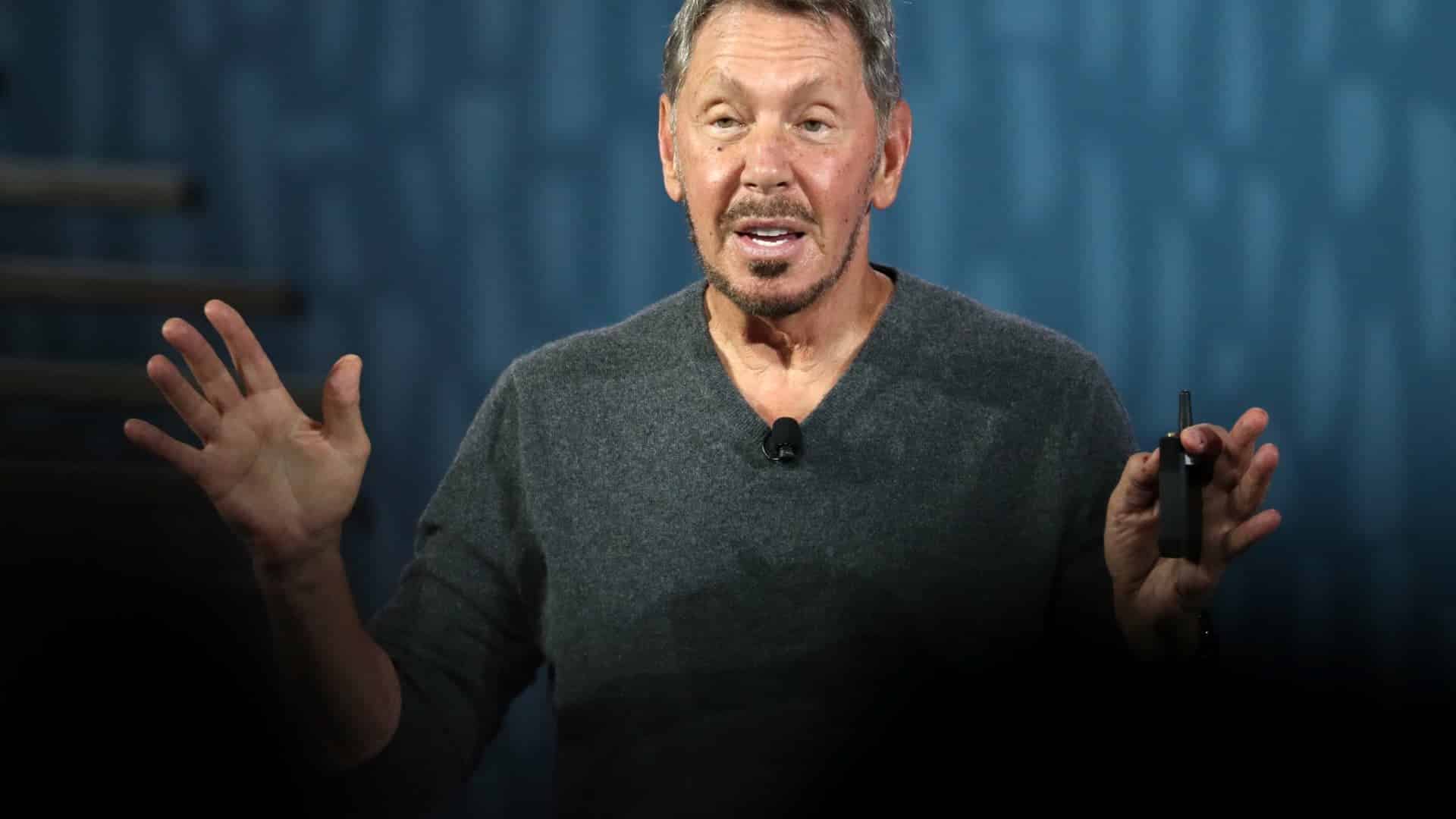

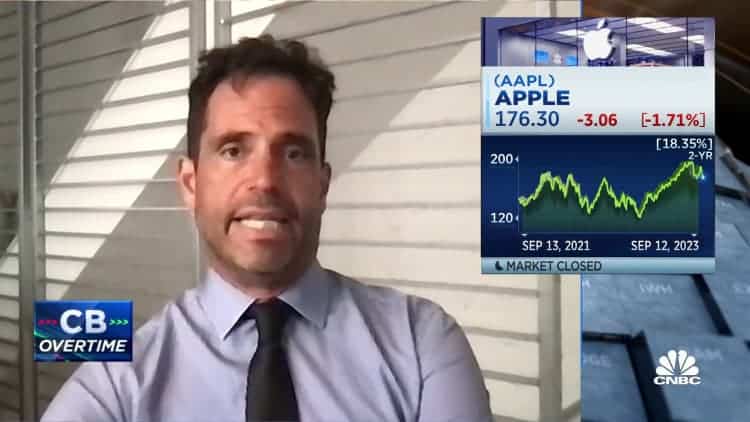
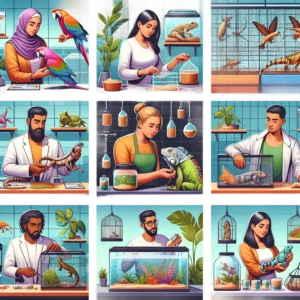

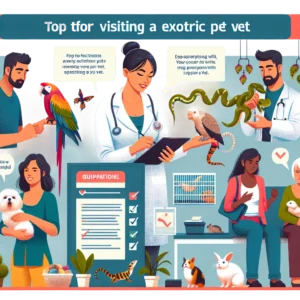


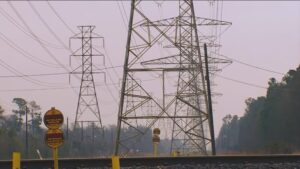
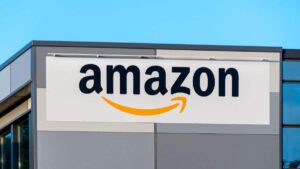
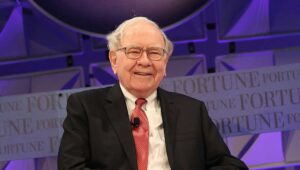


Post Comment